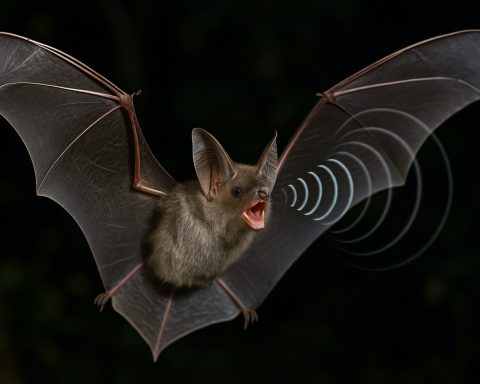- The military aircraft market is projected to grow from $113.4 billion in 2023 to $196.52 billion by 2032, with a 6.3% annual growth rate.
- Key growth drivers include technological advancements, geopolitical tensions, and the demand for advanced military capabilities.
- North America and Europe lead in innovation with major companies like Lockheed Martin and Airbus, while Asia-Pacific nations increase procurement for regional influence.
- Emerging technologies such as stealth, supersonic speeds, and unmanned aerial systems are crucial in modern military aircraft development.
- Manufacturers face challenges like high costs and competition, requiring strategic partnerships and technological breakthroughs.
- The transition to sustainable aviation fuels and carbon footprint reduction is both a challenge and an opportunity.
- Success in the sector depends on integrating cutting-edge technology with sustainable strategies to ensure future aerial superiority.
The rumble of engines, the cutting-edge design, and the soaring stratospheres: the world of military aircraft is not just about aerial dominance, but an evolving narrative of global power play and technological innovation. The military aircraft market, valued at a staggering $113.4 billion in 2023, is on a trajectory set to reach $196.52 billion by 2032. This robust growth, marked by a 6.3% annual uptick, is driven by a relentless pursuit of advanced capabilities and geopolitical tensions.
As the geopolitical landscape shifts, nations are compelled to shore up their defense arsenals, with military aircraft at the forefront. North America and Europe, bolstered by giants like Lockheed Martin and Airbus, maintain a stronghold in innovation and production. Meanwhile, Asia-Pacific nations, propelled by strategic imperatives, are accelerating their procurement and development to assert regional influence.
This burgeoning market is fueled by a composite of emerging technologies. Stealth, supersonic speeds, and unmanned aerial systems (UAS) are not just the stuff of science fiction but integral components of modern air fleets. Advanced composite materials, capable of enduring extreme conditions while maintaining agility, are being woven into the fabric of future airframes.
Security threats, both conventional and asymmetric, demand adaptability and foresight. As a result, military aircraft manufacturers are not only focused on crafting indomitable machines but also on embedding them with sophisticated electronics and systems capable of electronic warfare and cyber defense.
Yet, challenges skirt these developments. Spiraling costs, coupled with intense competition among key players—like Boeing, BAE Systems, and Dassault Aviation—require strategic partnerships and technological breakthroughs to stay ahead in a crowded sky. Moreover, the transition to sustainable aviation fuels and the reduction of carbon footprints present both a hurdle and an opportunity for the industry.
In this sky-high race, adaptability is the ticket to dominance. The innovators who successfully integrate cutting-edge technology with sustainable practices will not only secure markets but will define the future of aerial combat. As nations vie for air superiority, the silent hum of drones and the invisible cloak of stealth fighters illustrate a broader narrative: the battlefield of tomorrow is taking shape today, above our heads.
Key takeaway? The military aircraft market is not just about aircraft; it’s a tapestry of technological, economic, and strategic threads. To thrive, stakeholders must navigate a complex terrain of innovation, collaboration, and competition.
The Future of Military Aircraft: Innovations, Trends, and Strategic Implications
Expanding Horizons: The Future of Military Aircraft
The military aircraft landscape is evolving rapidly, driven by technological advancements and shifting geopolitical dynamics. As nations strive to establish aerial dominance, the market is projected to grow from $113.4 billion in 2023 to a remarkable $196.52 billion by 2032. This growth is spurred by an annual increase of 6.3%, highlighting the sector’s vitality and strategic importance.
Key Technological Innovations
1. Stealth Technology: Stealth capabilities continue to be a game-changer. Developments in radar-absorbent materials and integrated systems reduce aircraft visibility, providing a tactical advantage.
2. Supersonic and Hypersonic Speeds: Advanced propulsion systems enable supersonic and even hypersonic flight, enhancing both speed and responsiveness. These speeds shorten the time to reach targets and minimize detection risk.
3. Unmanned Aerial Systems (UAS): The rise of drones in military operations reflects their versatility in reconnaissance, combat, and electronic warfare. UAS also reduce the risk to human pilots in dangerous missions.
4. Composite Materials: Aircraft are increasingly being built with lightweight, durable composite materials. These materials improve fuel efficiency and overall performance.
5. Electronic Warfare and Cyber Defense: As air combat shifts to digital arenas, aircraft are equipped with systems for electronic warfare and protection against cyber threats. This ensures operational integrity even in hostile environments.
Challenges and Opportunities
Challenges:
– Cost Management: The high cost of developing and procuring advanced aircraft poses a challenge. Governments and manufacturers must balance innovation with budget constraints.
– Intense Competition: Major players like Boeing, BAE Systems, Dassault Aviation, Lockheed Martin, and Airbus must continually innovate to maintain market share.
– Sustainability: The push for sustainable aviation fuels and reduced emissions is both a regulatory requirement and a market opportunity. Achieving sustainability without compromising performance is crucial.
Opportunities:
– Strategic Partnerships: Collaboration between companies and countries can lead to technological breakthroughs, shared resources, and market expansion.
– Market Expansion in Asia-Pacific: The Asia-Pacific region is becoming a significant player, investing in indigenous capabilities while purchasing from global suppliers.
Market Trends and Forecasts
– Integration of AI: Artificial Intelligence is being integrated into military aircraft for enhanced decision-making and autonomous operations.
– Global Defense Budget Increases: As geopolitical tensions rise, global defense budgets are likely to increase, promoting further investments in advanced military aircraft.
Actionable Insights
– Invest in Research and Development: Continuous investment in R&D is essential for staying ahead in technology and sustainability.
– Collaborate Across Borders: Forming alliances with international partners can facilitate access to new markets and technologies.
– Adopt Advanced Training Techniques: Simulators and virtual reality can enhance pilot training, preparing them for modern, complex combat scenarios.
Conclusion: Navigating the Skies Ahead
The military aircraft industry is poised for dynamic growth, fuelled by technological innovations and evolving defense strategies. Stakeholders must remain agile, aligning cutting-edge technology with sustainable practices to secure a competitive edge. As the battlefield shifts to the skies, the future of warfare is undeniably airborne.
For more insights on defense technologies and global industry trends, visit Lockheed Martin and Airbus.
—
Utilize these insights to stay informed about advancements and strategies in the military aircraft sector. Whether you’re an industry insider or defense enthusiast, keeping abreast of these developments ensures preparedness for the transformative years ahead.







